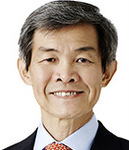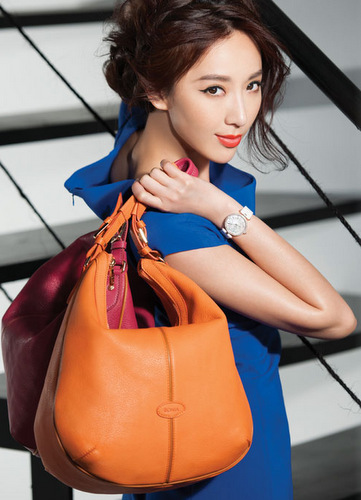Dear Investor,
|
|
Company and Portfolio Updates
 Daniel Chan, founder of DCG Capital.During the fourth quarter, we added 14 new positions to the portfolio: 10 China/Hong Kong names, one Indonesia, one Korea, one Malaysia and one Vietnam, and got rid of eight names. We took advantage of the Shanghai-Hong Kong Stock Connect, which opened in mid-November, and bought two Chinese stocks listed on the Shanghai Stock Exchange.
Daniel Chan, founder of DCG Capital.During the fourth quarter, we added 14 new positions to the portfolio: 10 China/Hong Kong names, one Indonesia, one Korea, one Malaysia and one Vietnam, and got rid of eight names. We took advantage of the Shanghai-Hong Kong Stock Connect, which opened in mid-November, and bought two Chinese stocks listed on the Shanghai Stock Exchange. One of these is SAIC Motor Corporation (“SAIC”), the largest auto-manufacturing group in China with a 24% national market share. If you have been in the back seat of a cramped Shanghai taxi sometime in the past 30 years, it would very likely have been one of SAIC Motor’s ubiquitous Volkswagen (“VW”) Santana taxis. SAIC is 77% Shanghai government owned-controlled and its primary products are cars, minibuses and light trucks. The bulk of SAIC’s value lies in its 50/50 joint ventures with VW and General Motors (“GM”). Shanghai VW and Shanghai GM each sell about 1.7 to 1.8 million vehicles annually, accounting for roughly 60% of total SAIC vehicle production and 90% of SAIC’s net income.
With increasing focus on pollution control, intractable traffic jams and government restriction on car ownership, we don’t expect any Chinese automaker to return to the 20% to 50% kind of annual growth rates seen in the past decade. Nonetheless a mid to high single-digit percentage volume growth over the next five years appears comfortably within reach as existing car owners look to upgrade to SUVs (Sports Utility Vehicles) or MPVs (Multi-purpose vehicles) while Chinese economic growth inland spreads the joy of new car ownership from the coastal cities. We think SAIC can do better than this.
Strong contribution from the joint venture with GM (Chevy, Buick and Cadillac) and a new slate of 2015 VW models suggests SAIC will continue to beat market growth and extend its leading market share in the foreseeable future. We also expect SAIC to benefit from the long running competition between VW and GM in the China market. In 2013, VW retook its spot as China’s top selling foreign brand after GM’s long nine year reign at the top. VW’s newly announced EUR22 billion investment in its two Chinese joint ventures over the next five years will help expand SAIC’s exposure inland. GM, on its part, is already a third of a way into its USD12 billion 2014 to 2017 expansion plan to China’s West.
Based on surveys we have seen, foreign JV brands, and in particular, VW, continues to be aspirational for Chinese consumers and tends to invoke the highest brand loyalty. SAIC’s current valuation is attractive, with a third of its RMB220 billion market cap in cash, price-to-book (“PB”) ratio of 1.4x, PE ratio of 7.7x , and a dividend yield 6.5%.
 Bonia Group's flagship fashion label is BONIA but it also holds the license to distribute international labels such as Santa Barbara Polo & Racquet Club, Austin Reed, Valentino Rudy, Jeep, The Savile Row Company, Braun Buffel, Pierre Cardin, Bruno Magli, Enrico Coveri, Renoma Café Gallery and Renoma. Photo: CompanyWe bought back into Bonia after its share price had fallen to MYR0.83. We had earlier sold all our positions in August at about MYR1.30 and thought the stock was attractive again at this price, trading at a PE ratio of only 10x and 1.8x book.
Bonia Group's flagship fashion label is BONIA but it also holds the license to distribute international labels such as Santa Barbara Polo & Racquet Club, Austin Reed, Valentino Rudy, Jeep, The Savile Row Company, Braun Buffel, Pierre Cardin, Bruno Magli, Enrico Coveri, Renoma Café Gallery and Renoma. Photo: CompanyWe bought back into Bonia after its share price had fallen to MYR0.83. We had earlier sold all our positions in August at about MYR1.30 and thought the stock was attractive again at this price, trading at a PE ratio of only 10x and 1.8x book. Bonia, which sells mainly ladies handbags and owns the Braun Büffel trademark for Asia Pacific has been seeing softness in its sales in Malaysia and Singapore, its key markets. Moves to expand into Vietnam and Indonesia have also increased expenses resulting in net margin squeeze.
With the implementation of 6% Goods and Service Tax in Malaysia coupled with other macro-economic headwinds caused by the oil price collapse we can expect Bonia to face soft business conditions in the coming months.
Nevertheless, we are comfortable reinvesting in the company at this price. We were also encouraged by the fact that management and insiders have been buying after the sharp price fall.
During the quarter, Hui Xian REIT announced its acquisition of Metropolitan Plaza, a prime commercial property in Chongqing, China. Located in the prime Jiefangbei central business district (“CBD”), the plaza consists of a shopping mall with a gross floor area of 1.17 million square feet and 543,000 square feet of office space. The seller, Hutchison Whampoa, has guaranteed Hui Xian REIT a minimum rental income of RMB299 million for five years. Based on RMB3.9 billion acquisition price, this works out to about RMB29,000 per square meter for retail and about RMB16,800 per square meter for office. This compares favourably with Capitaland’s replacement cost (development cost and land cost) for the new site nearby which works out to about RMB25,800 per square meter.
Metropolitan Plaza is however more centrally located in the center of the CBD and even adjusting for a shorter lease and older building, the purchase looks attractive. The acquisition which is 80% funded by debt and 20% cash, will be accretive, adding about 4.2% to the current dividend per unit (DPU) and will bring Hui Xian’s gearing to only 15.4%. Chongqing has a population of about 29 million people of whom six to seven million live in the urban areas. The office building is 97.3% occupied and major tenants include KPMG, PricewaterhouseCoopers, the offices of the Consulate Generals for UK and Canada, Deutsche Bank, HSBC, Dragonair, 3M and Johnson & Johnson Medical. The shopping mall, which is 92.5% occupied, boasts of tenants like Far Eastern Department Store, Food Republic, Calvin Klein, Hugo Boss, Paul Frank, Watsons, Adidas, Levis and Nike.
D&L Industries (“DNL”) is one of the leading business-to-business manufacturers and suppliers of customized food ingredients, specialty plastics and aerosols to various consumer businesses in the Philippines. The company announced a good set of results for the nine months ended September with revenues and net profits growing 38% and 24% y-o-y to PHP10,485 million and PHP1,293 million respectively.
The main contributors were in the refined edible oils business segment and the customized edible oils business segment which increased 36% and 10% respectively. In the fourth quarter, DNL completed the privatization of Chemrez Technologies, which was an associated company listed on the Philippines Stock Exchange. Chemrez manufactures a range of vegetable oil-related products, biodiesel from coconuts, resins, and various powder coatings for use in protective and decorative finishing. On a consolidated basis for January to September 2014, the acquisition increased DNL’s net assets and net profits by 29% and 19% respectively.
Since our initial purchase in January at about PHP6.10, DNL’s stock price had appreciated significantly rising to an intra-day high of PHP17.20 in early December. With the rapid run-up in stock price, we had significantly reduced our holdings in DNL as it had reached our estimate of its intrinsic value.
Luen Thai, the Hong Kong listed apparel and leather goods manufacturer, saw its stock price dropping 50% from a high of HK$2.60 in January 2014 to HK$1.35 at end of December 2014. The massive derating followed a string of poor operating results from key clients like Coach, Esprit and low order visibility from large clients like Uniqlo, Polo and Adidas. Luen Thai had reported a 9% decrease in net profit despite a 4% increase in revenue for the first half of 2014. The casual and fashion apparels segment suffered a 17% fall in profit due to a lower utilization rate following cautious orders from key clients and disruption in production and logistics caused by the labor strike in Cambodia in early 2014. Going into the second half, management was cautious on client orders as the global retail environment remained very competitive with muted growth.
Retailers like Uniqlo, Adidas and Michael Kors are also facing inventory issues and continue their cautious tone on placing orders. At the current price of HK$1.40, the stock looks undervalued trading at less than half book value. We are comfortable maintaining our holding as Luen Thai is an established player in the apparel manufacturing industry with a strong balance sheet.
Greatview Aseptic’s (“GaPack”) share price fell from HK$5.20 per share to HK$3.80 per share in early November after the company reported a 16% decline in profit for the first nine months of the year. While sales volume increased significantly, the average selling price to key clients were lower by about 3% to 5%. GaPack’s key clients, Yili and MengNiu, two of the largest producers and brand owners of dairy products in China, have seen slower growth in liquid milk sales in 2014 and more intense competition from other domestic brands and imported UHT (ultra-high temperature processed) milk. Despite lower raw material cost, operating cost from new production lines in Gaotang and Germany weighed on the company’s profitability.
While the short term environment is challenging, we still believe in the long term prospects for GaPack, as milk consumption should continue growing in China and demand for UHT milk packaging in Europe may increase after the elimination of the milk quota system for European farmers in 2015.
We have exited all our positions in Malindo Feedmill in the fourth quarter. The poultry industry in Indonesia in FY14 was impacted negatively by significantly higher raw material costs resulting from the Indonesian Rupiah’s 30% decline against the US Dollar 2013. Malindo’s day-old-chicks (“DOC”) business incurred losses after the surprise decision by the Indonesian government to impose a cap on DOC selling price which, at IDR3,200 per bird, is below production cost. To worsen the situation, Charoen Pokphand Indonesia (“CP Indonesia”), the largest poultry feed and DOC producer in the country, initiated a very aggressive campaign to gain poultry feed market share by giving free DOC to farmers who buy feed from CP Indonesia. Due to the aggressive capacity expansion by major players in 2013 we expect market conditions to remain challenging for the near term.
|
|
Previous stories:





